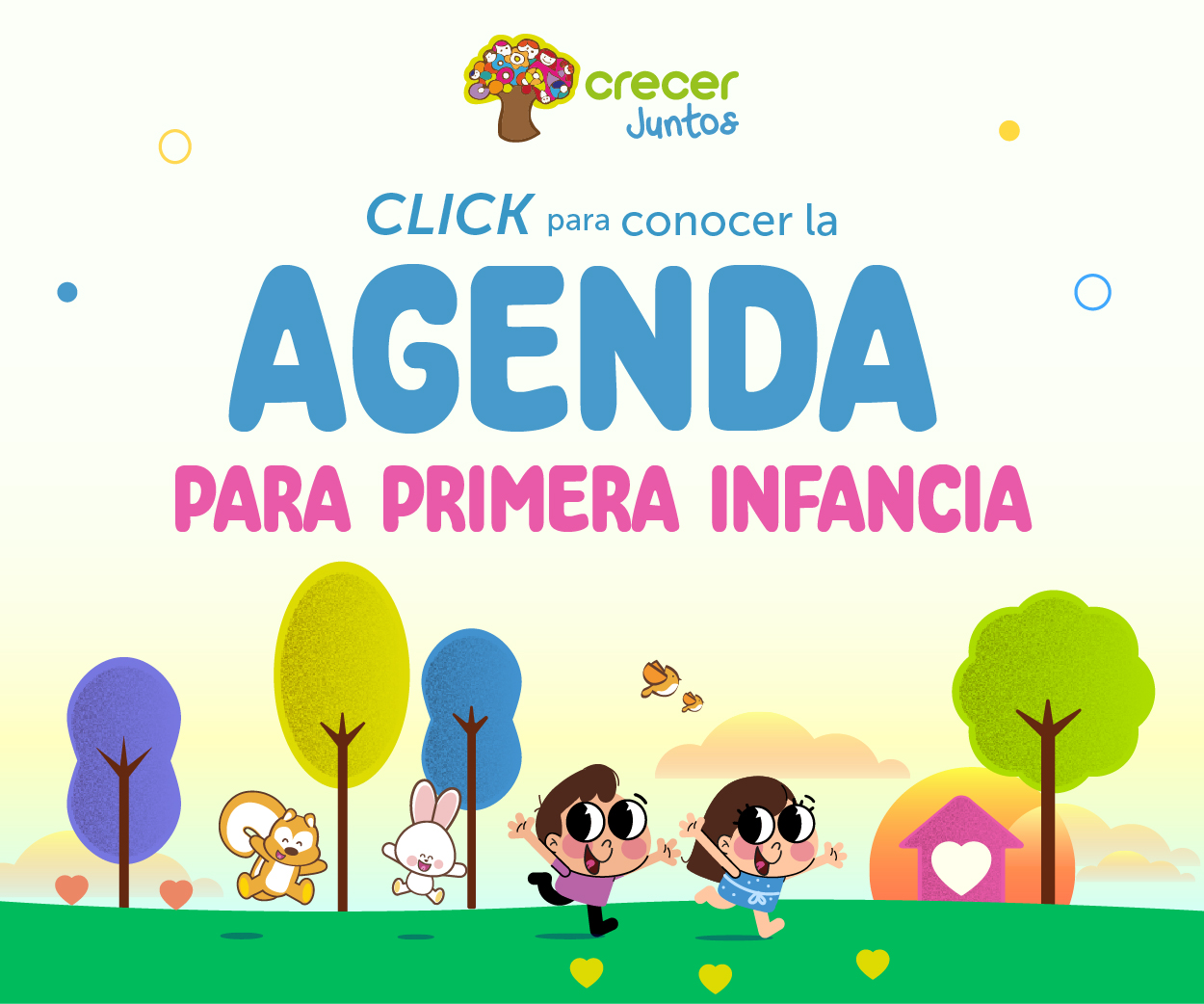International
Ukraine destroys another key bridge in the Russian region of Kursk and takes another locality
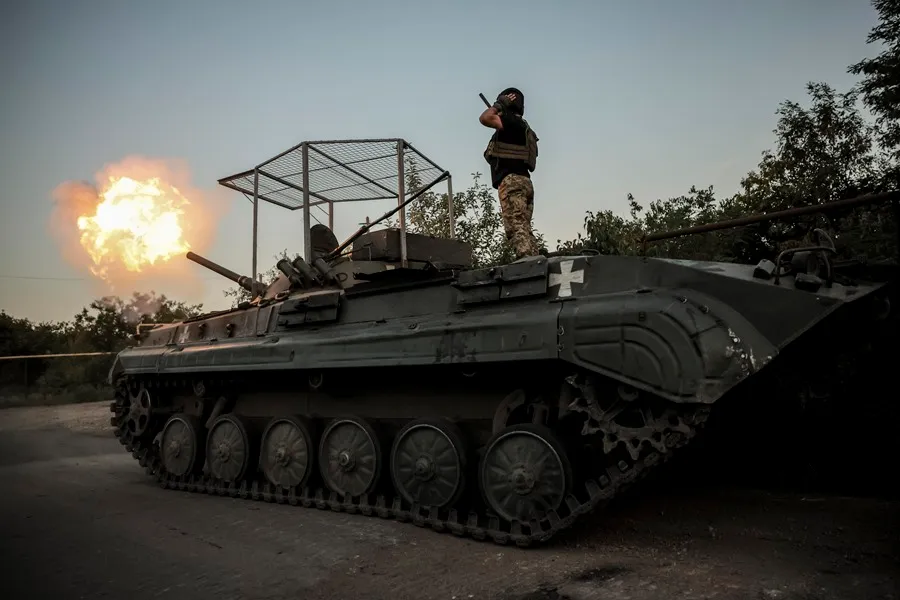
The Ukrainian Army claims that it has destroyed a second bridge in the Russian region of Kursk where its detachments are “reinforcing” positions, Air Force Commander Mykola Oleshchuk reported on his Telegram channel. In addition, he has taken the Russian town of Otruba.
Oleshchuk posted a video on that social network where he apparently shows what he described as a “precise” air strike on the structure of the bridge.
Although Oleshchuk did not specify the location of the damaged structure, the Russian Telegram channel ‘Mash’ said that it was a bridge over the Seim River, near the town of Zvannoye.
He also stated that the attack used HIMARS (multiple rocket launcher system) supplied by the United States, according to information from local Russian media that cannot be independently verified.
If this attack is confirmed, it would be the second bridge destroyed by Ukrainian forces in recent days, which will further hinder Russia’s ability to replenish troops to defend itself from Ukraine’s incursion.
Another bridge over the Seim River in the Glushkovsky district in the Russian region of Kursk was attacked on August 16, as confirmed by Alexey Smirnov, interim governor of the region.
For its part, Russia affirmed that “this is not the time” to negotiate with Ukraine in view of its offensive in the Russian border region of Kursk, but insisted that Moscow’s conditions for the settlement of the conflict “are not annulled.”
“No, (the conditions) are not canceled, but right now it would be inappropriate to start a negotiation process,” Kremlin adviser Yuri Ushakov told the Telegram Shot channel.
He insisted that at the current stage of Ukraine’s incursion into Kursk, Russia is not going to talk to the authorities of that country.
Ushakov thus referred to the conditions of Russian President Vladimir Putin to end the war in Ukraine, which go through the withdrawal of Kiev forces from four regions annexed by Moscow in September 2022.
Russian forces captured 19 Ukrainian soldiers during the defense of the Russian region of Kursk from the Ukrainian offensive, the state agency RIA Novosti reported.
Almost two weeks after the start of Ukraine’s cross-border offensive in the Russian region of Kursk, Ukrainian troops claim to control about 1,000 square kilometers of Russian territory and more than 80 settlements in the region and continue to move forward.
One of the objectives of the Ukrainian incursion into Kursk is to create a plug zone in the territory of the aggressor country, Ukrainian President Volodymyr Zelensky has confirmed.
“Right now, the main task of our defensive actions is to destroy as much as possible of the Russian potential, of its war potential, and maximize our counterattacks,” Zelenski said in his last night speech.
“This includes the creation of a plug zone in the aggressor’s territory: our operation in the Kursk region,” he explained.
Everything that inflicts damage to the Army, the State, the defense or the economy of the Russian Federation helps Ukraine to prevent the expansion of the war and put an end to it with “a just peace for Ukraine,” Zelenski emphasized.
On the other hand, Ukrainian forces have taken the Russian town of Otruba and 11.5 square kilometers of its surroundings after penetrating the Russian region of Kursk crossing the border in another area, 35 kilometers from the initial incursion, Ukrainian military analysts say.
The take of Otruba was confirmed by the Ukrainian analysis platform DeepState on Sunday at the last minute.
According to the map of the fights, there are several more localities that are in the running, including Tiotkino and the territories near Popovo-Lezhachi, so in total there are six square kilometers that are being contested in that area.
These fighting is taking place west of the Glushkovo district of the Kursk region, about 35 kilometers away from the area that Ukraine already controls in the Russian region, east of that district.
To the east of the Glushkovo district, Ukraine captured the towns of Snagost and Apanasivka, Deepstate also reported on Sunday night, and its forces have also made advances in Olgovka, near Korenevo, to the north.
As a result, Ukraine already controls or disputes more than 1,200 square kilometers of Russian territory in Kursk, according to Deepstate.
However, families with minors will have to leave the city of Pokrovsk, in the eastern Ukrainian region of Donetsk, due to the danger posed by the Russian advance towards the important logistical node, the authorities announced.
Russia has lost more than 600,000 of its soldiers, between dead and wounded, since the beginning of its large-scale invasion that began almost two and a half years ago, said the General Staff of the Ukrainian Army.
In addition, the International Atomic Energy Agency (IAEA) warns of the deterioration in the safety of the Ukrainian nuclear power plant in Zaporijia, under Russian occupation and with the reactors turned off since 2022, after the impact this weekend of a drone with an explosive charge near the plant.
“Nuclear power plants are designed to withstand technical, human and external events, even extreme failures, but they are not built to resist a direct military attack,” explains the director general of the IAEA, the Argentine Rafael Grossi, in a statement.
The Ukrainian Air Force also stated that last morning it has managed to successfully intercept the 11 kamikaze-type drones launched by Russia from the Kursk and Primorsko-Akhtarsk regions.
For its part, the Russian Army took the Ukrainian town of Zalizne, known to the Russians as Artiomovo, in its advance towards the city of Toretsk, one of the objectives of the Russian offensive in the annexed region of Donetsk, as reported today by the Russian Ministry of Defense in its daily war report.
Central America
Senator Van Hollen Meets with Deported MS-13 Member in El Salvador; Trump and Bukele React
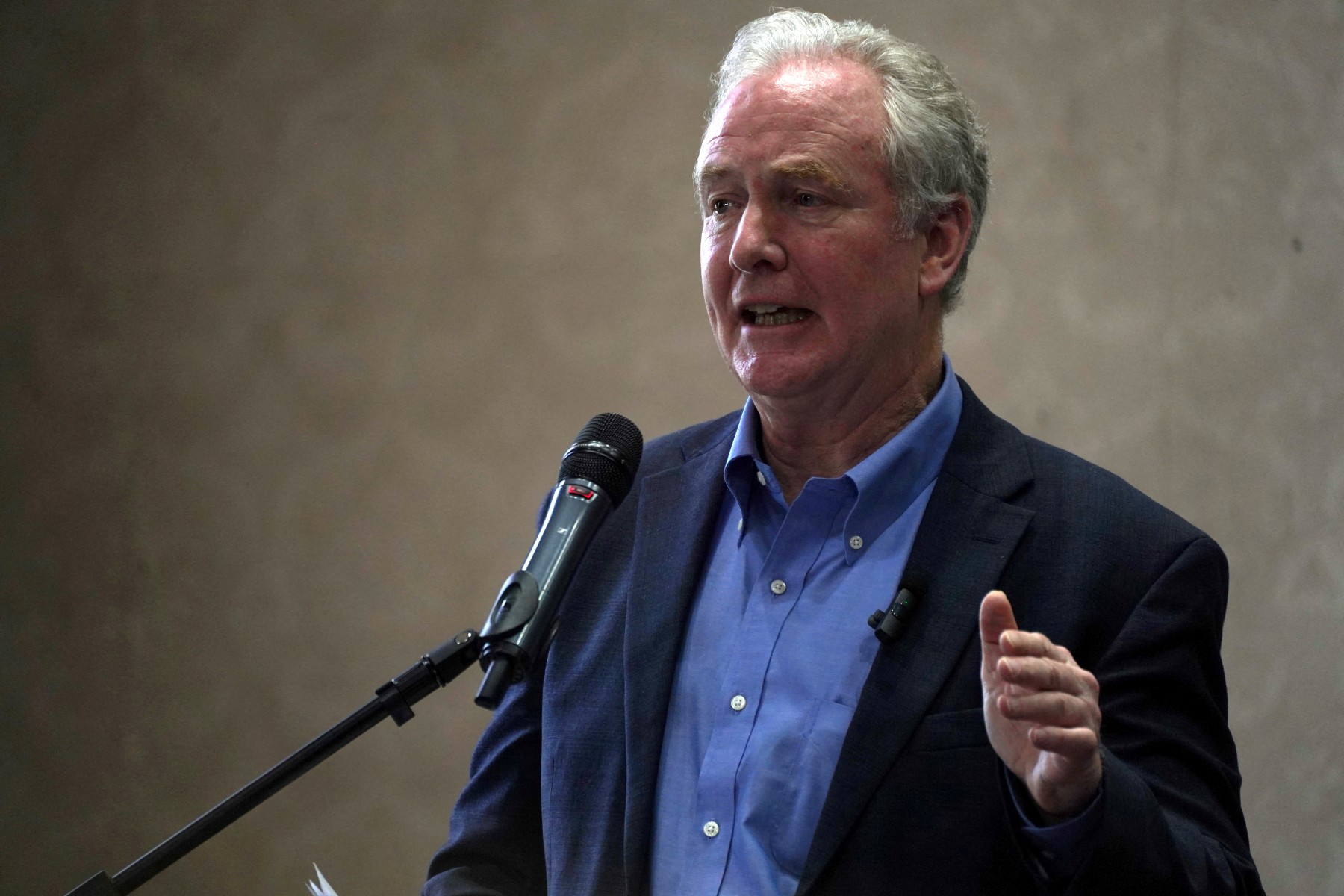
U.S. Democratic Senator Chris Van Hollen, representing the state of Maryland, held a meeting in El Salvador with deported MS-13 gang member Kilmar Ábrego García, a member of the criminal group classified by the U.S. government as a terrorist organization.
“Kilmar Ábrego García, miraculously resurrected from the ‘extermination camps’ and ‘torture chambers,’ now sipping margaritas with Senator Van Hollen in the tropical paradise of El Salvador!” wrote President Nayib Bukeleon X (formerly Twitter), sharing photos of Van Hollen, Ábrego García, and a lawyer sitting together at a Salvadoran hotel.
The deported gang member is seen wearing a plaid shirt and a flat-brimmed cap, seated at a table with glasses and coffee cups. The senator also shared images of the meeting on his own social media accounts.
Bukele reaffirmed that Ábrego will remain in El Salvador and will not be returned to the United States.
“Now that his health has been confirmed, he has earned the honor of remaining under the custody of El Salvador,” Bukele added.
Former U.S. President Donald Trump criticized the senator’s meeting with Ábrego on Truth Social, calling Van Hollen “a fool” for advocating for Ábrego’s return to the U.S.
International
Pope Francis Appears for Easter Blessing, Calls for Peace and Religious Freedom

Pope Francis, still recovering from pneumonia, appeared on the balcony of St. Peter’s Basilica in the Vatican on Easter Sunday and, with a faint voice, wished a “Happy Easter” to the thousands of faithful gathered to celebrate the Resurrection of Christ.
A month after being discharged from a lengthy hospital stay, the presence of the 88-year-old pontiff had remained uncertain, with the Vatican not confirming his attendance ahead of time.
Eventually, the pope made a brief appearance in a wheelchair shortly after 12:00 p.m. (10:00 GMT) to deliver his traditional “Urbi et Orbi” blessing (“to the city and to the world”).
Although no longer wearing an oxygen cannula, the Argentine Jesuit relied on a close aide to read his Easter message, which touched on major global conflicts.
Francis condemned the “dramatic and unworthy humanitarian crisis” in Gaza and called for a ceasefire, while also expressing concern over the “growing climate of antisemitism spreading across the globe.”
He further emphasized the importance of religious freedom and freedom of thought, stating that without mutual respect, “peace is not possible.”
International
Thousands rally nationwide against Trump’s threat to U.S. democracy
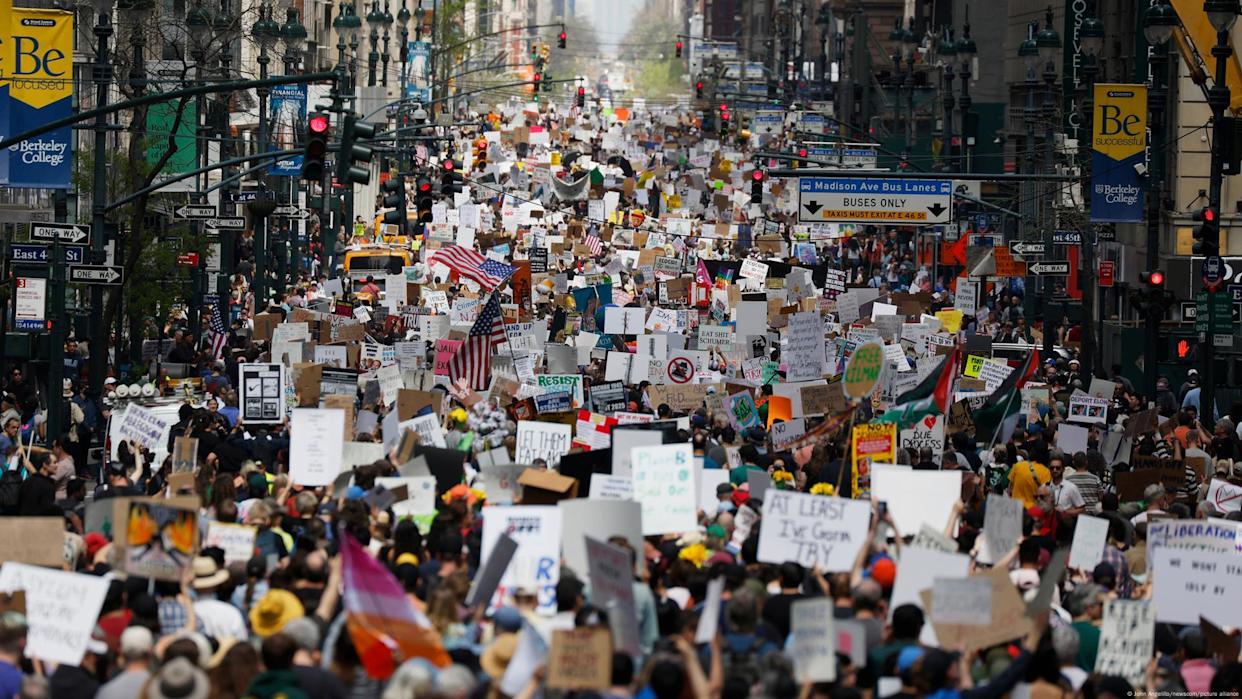
Thousands of protesters gathered on Saturday (April 19, 2025) in major cities like New York and Washington, as well as in small communities across the United States, in a second wave of demonstrations against President Donald Trump. The crowds denounced what they view as growing threats to the country’s democratic ideals.
In New York City, demonstrators of all ages rallied in front of the Public Library near Trump Tower, holding signs accusing the president of undermining democratic institutions and judicial independence.
Many protesters also criticized Trump’s hardline immigration policies, including mass deportations and raids targeting undocumented migrants.
“Democracy is in grave danger,” said Kathy Valyi, 73, the daughter of Holocaust survivors. She told AFP that the stories her parents shared about Adolf Hitler’s rise to power in 1930s Germany “are happening here now.”
In Washington, demonstrators voiced concern over what they see as Trump’s disregard for long-standing constitutional norms, such as the right to due process.
-
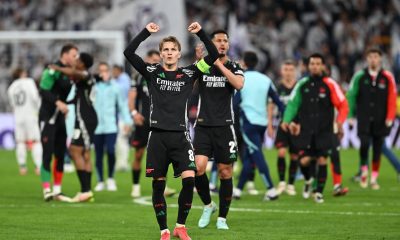
 International5 days ago
International5 days agoArsenal stun Real Madrid at the Bernabéu to reach Champions League semifinals
-

 Central America4 days ago
Central America4 days agoNicaraguan Exiles to Mark 7th Anniversary of 2018 Protests with Global Commemorations
-
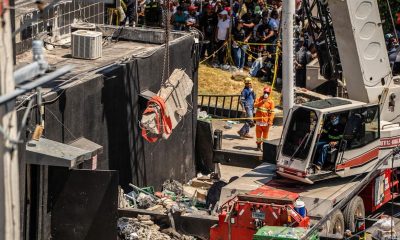
 International4 days ago
International4 days agoDominican ‘False Hero’ Arrested for Faking Role in Nightclub Collapse That Killed 231
-
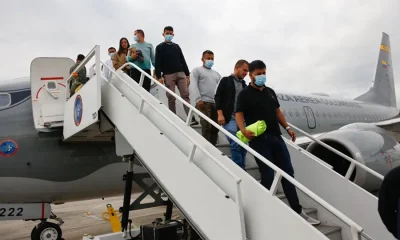
 International3 days ago
International3 days agoACLU seeks emergency court order to stop venezuelan deportations under Wartime Law
-
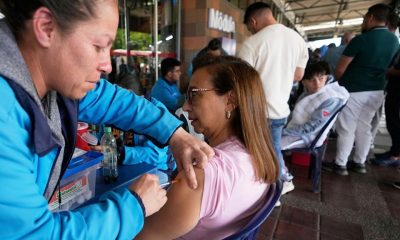
 International5 days ago
International5 days agoBogotá residents line up for yellow fever vaccine amid national alert
-
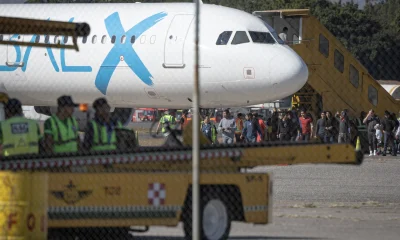
 Central America3 days ago
Central America3 days agoUN complaint filed against Costa Rica over detention of migrant children
-
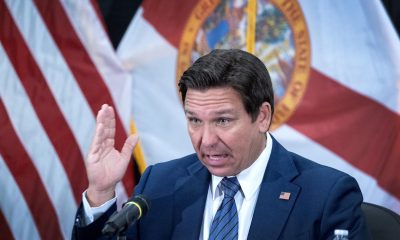
 International5 days ago
International5 days agoDeSantis’ immigration crackdown sparks alarm in Venezuelan Communities in Doral
-

 International5 days ago
International5 days agoMexico refuses to restore ties with Ecuador while Noboa remains in office
-
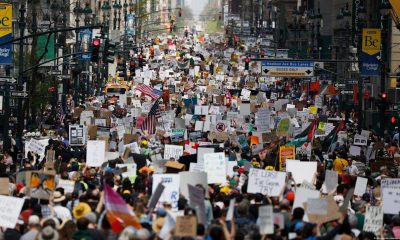
 International2 days ago
International2 days agoThousands rally nationwide against Trump’s threat to U.S. democracy
-

 Central America22 hours ago
Central America22 hours agoSenator Van Hollen Meets with Deported MS-13 Member in El Salvador; Trump and Bukele React
-

 International22 hours ago
International22 hours agoPope Francis Appears for Easter Blessing, Calls for Peace and Religious Freedom












